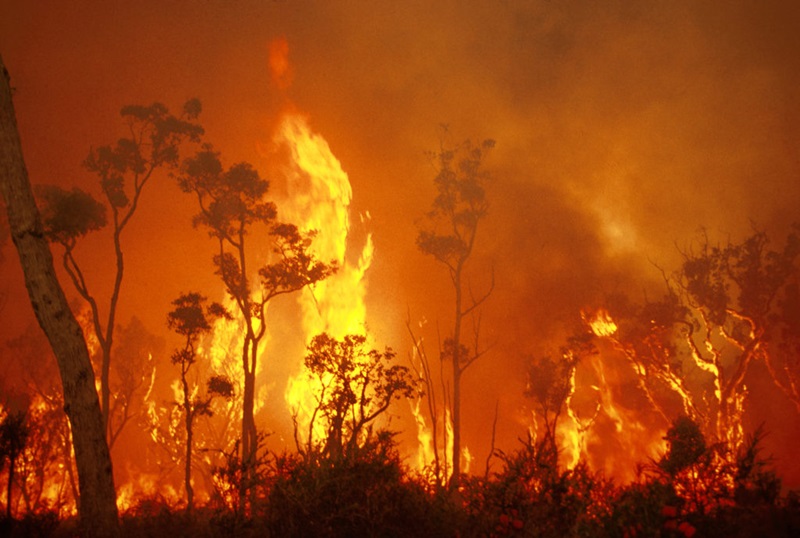Planning for Security: Establishing an Efficient Bushfire Management Plan
Planning for Security: Establishing an Efficient Bushfire Management Plan
Blog Article
Vital Tips for Bushfire Administration to Ensure Fire Security

Understanding Bushfire Threat Levels
Understanding the differing levels of bushfire risk is vital for efficient planning and prep work in mitigating potential hazards to residential properties and lives. Bushfire risk degrees are typically classified based on factors such as weather condition conditions, gas accessibility, topography, and historic fire habits. By understanding these threat degrees, neighborhoods and individuals can proactively implement methods to reduce vulnerability and boost strength despite possible bushfire occasions.
The initial degree of bushfire danger is reduced danger, where the probability of a bushfire happening and triggering substantial injury is marginal. Risky degrees signify a considerable risk, with conditions helpful to rapid fire spread and extreme fire actions.
Recognizing these bushfire danger degrees enables stakeholders to customize their readiness and action actions as necessary, making sure a efficient and proactive technique to bushfire monitoring.
Creating a Defensible Area
Effective bushfire monitoring begins with developing a defensible area around residential or commercial properties to boost defense versus prospective fire threats. A defensible room is a buffer zone that creates an obstacle between a structure and the surrounding combustible plant life. This space works as a crucial line of protection, giving firemans a secure area to run and assisting to lower the danger of a fire spreading out to the building.
When establishing a defensible room, it is necessary to think about the format of the building and the surrounding landscape. Cleaning plants, especially extremely combustible plants, within a particular distance of the home can aid prevent the fast spread of fires. Additionally, keeping a well-irrigated area around the building can further enhance its defensibility.
Regular upkeep of the defensible area is important to guarantee its effectiveness. This consists of trimming overhanging branches, removing dead plant life, and keeping the location complimentary of particles. By spending time and initiative right into establishing and keeping a defensible space, residential or commercial property owners can dramatically enhance their possibilities of shielding their homes and assets during a bushfire.
Applying Fireproof Landscaping
When creating landscapes to alleviate the risk of bushfires, incorporating fireproof aspects is necessary for improving building defense and minimizing fire threats. Select plants with high dampness web content, low oil content, and minimal dead greenery to lower the danger of fire spread.
Developing an Emergency Evacuation Strategy
Developing an extensive emergency situation evacuation strategy is crucial for ensuring the safety and security and health of individuals throughout potential bushfire occurrences (Bushfire Risk). An effective emptying strategy ought to outline clear treatments to follow in the event of a bushfire hazard, consisting of designated emptying courses, setting up points, and communication methods
To begin creating an emergency emptying strategy, it is vital to evaluate the details risks and vulnerabilities of your location. Determine several evacuation paths that cause secure locations far from the fire, considering elements such as terrain, road access, and potential risks. Establish communication channels to sharp locals of an approaching emptying, using techniques such as sirens, message informs, or door-to-door alerts.
Frequently evaluation and exercise the discharge plan with all citizens or community participants to make certain every person recognizes their duties and functions. Conduct drills to check the efficiency of the plan and make any type of needed modifications. By having a well-prepared emptying plan in place, you can boost the chances of a organized and secure discharge throughout a bushfire emergency.
Maintaining Fire Safety And Security Tools
After developing a thorough emergency situation emptying strategy for bushfire incidents, it is critical to focus on the regular upkeep of fire security devices to make certain optimum performance and readiness. Routine maintenance of fire safety and security devices such as fire extinguishers, smoke detectors, emergency alarm, and lawn sprinkler systems is essential in protecting lives and residential property during a bushfire. When check my site required., performing regular inspections, testing, and maintenance of these gadgets by qualified specialists is crucial to assure they are in working order.
Fire extinguishers must be inspected routinely for pressure levels, visible damage, and proper functionality. By vigilantly maintaining fire security devices, individuals can enhance their preparedness and feedback capabilities in the occasion of a bushfire.
Conclusion
To conclude, efficient bushfire management entails recognizing danger levels, creating defensible rooms, navigate to this website implementing fire-resistant landscape design, establishing discharge strategies, and preserving fire safety and security devices. By following these important ideas, individuals can guarantee much better fire defense and security for their areas and residential or commercial properties. It is essential to focus on aggressive steps to mitigate the dangers connected with bushfires and to be gotten ready for emergencies.
By recognizing the nuances of bushfire threat levels, creating defensible areas, implementing fireproof landscape design, producing comprehensive evacuation strategies, and making sure the maintenance of fire safety devices, areas and individuals can dramatically boost their resilience versus the devastations of wildfires - Bushfire Risk. These suggestions are not just essential for securing against instant fire dangers yet also for promoting lasting fire protection methods that can make a considerable distinction in the face of escalating bushfire threats
High-risk levels represent a substantial threat, with conditions favorable to fast fire spread and severe fire behavior. Routine maintenance of fire safety devices such as fire extinguishers, smoke detectors, fire alarms, and lawn sprinkler systems is crucial in protecting lives and property during a bushfire.In final thought, effective bushfire monitoring entails recognizing threat levels, creating defensible spaces, executing fire-resistant landscaping, creating discharge strategies, and preserving fire safety and security equipment.
Report this page